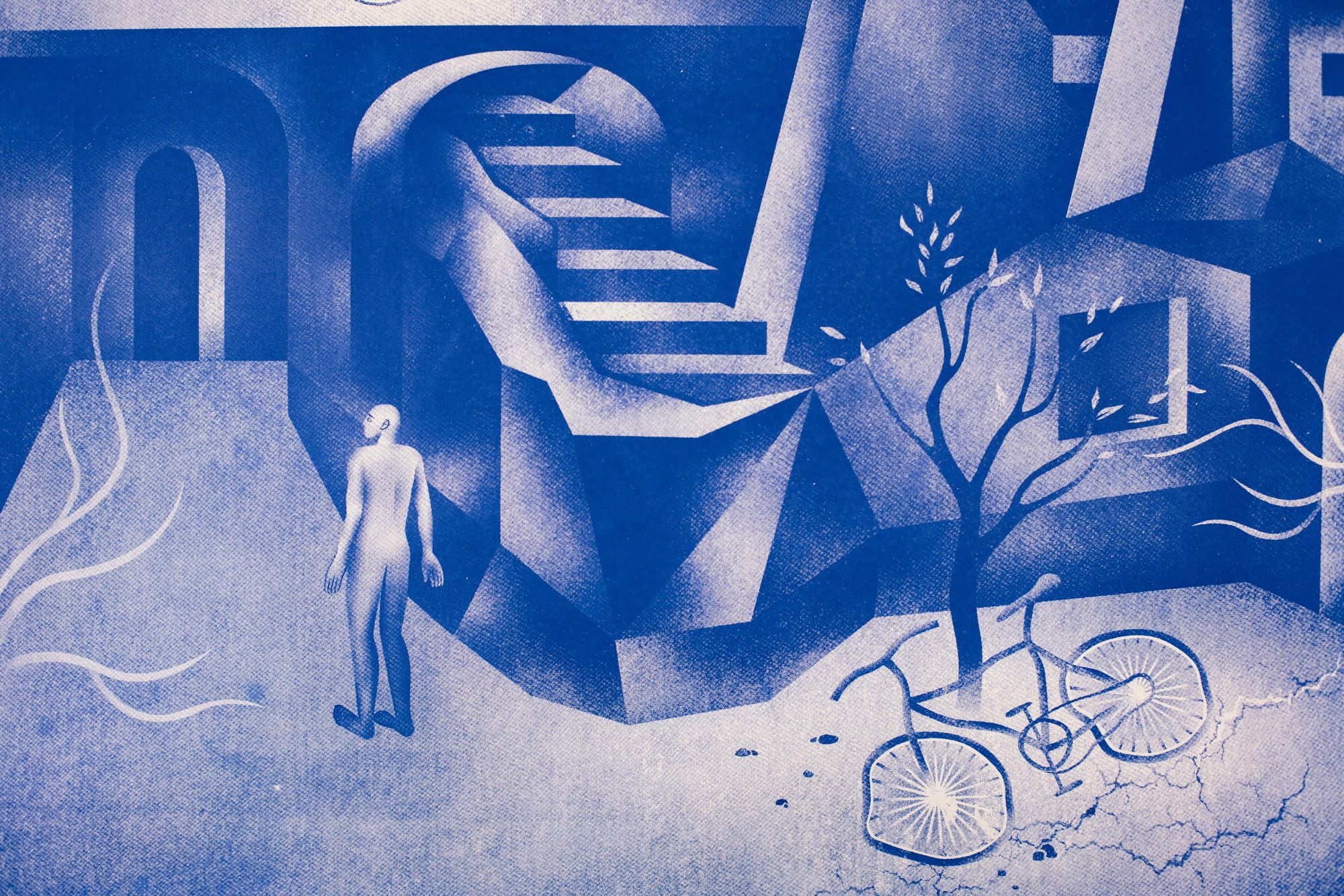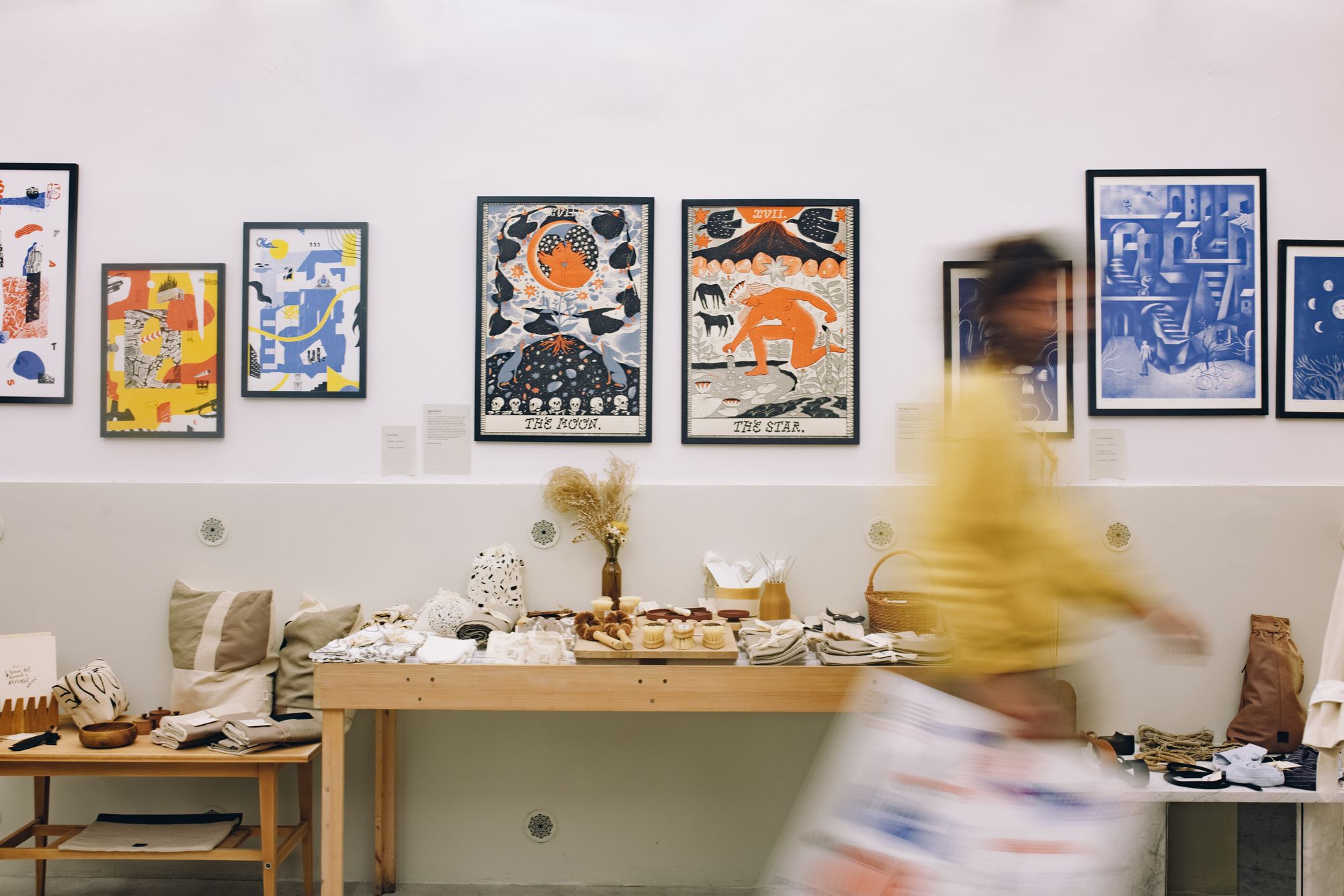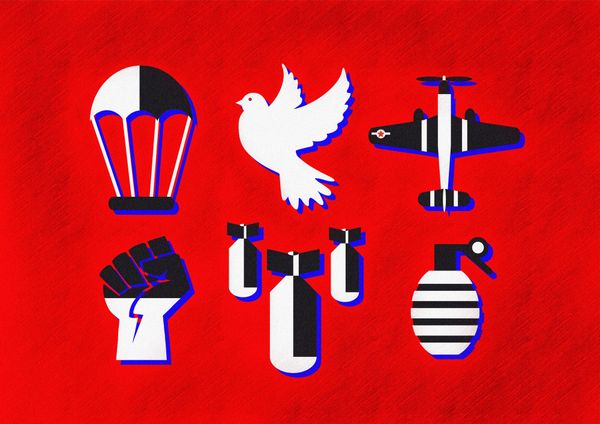Recently, our inner world has been affected by a number of negative external factors. And the Printa team wondered: are we really more psychologically burdened or are we simply more concerned with our inner world and the traumas it has suffered? In order to explore this topic and to develop and maintain a healthy mental state, they selected works by four young Hungarian artists.
Now the walls of the shop in downtown Budapest are decorated with illustrations by Enikő Eged, Júlia Jásdi, Kamilla Hu-Yang, and Lili Thury. You can even take them home, as the limited edition serigraphs are available for purchase while stocks last. We asked the creators about the inspiring collaboration and the philosophy behind the exhibited serigraphs.

Enikő Eged
Enikő says that for her, illustrating and creating images is an inner need. Her abstract works focus on various still lifes, animals, atmospheric moods, and comic book excerpts, which she likes to elaborate through a variety of illustrative forms. “The way and process by which I reduce certain shapes and images to foreground the mood or feeling I want to show is an important part of my creative course,” she notes. As she pointed out, how she reflects on a particular subject is a work of self-discovery for her. It’s an encounter with herself again and again.
Although mental health had not previously been a focus of her work, she found a narrative to which she could relate in a number of different ways. Enikő concentrated on the practice of mental stability and self-reflection. “To be able to look at ourselves a bit from above, more objectively, and at the flow that surrounds us, we can choose many different tools and paths. The Tarot card has undergone a rehabilitation of sorts in recent years: we are seeing more and more of it in active use, and more and more people are starting to learn about it. The patterns on which tarot works open up a playing field in self-awareness and in the network of relationships with other people that can shed light on a problem in a free, metaphorical, and associative way. The two cards I have chosen are the buzzwords of trust in the self (Star) and the realm of subconscious desires and dreams (Moon). Intuition, recognizing one’s own needs, and encountering the unknown within oneself are all self-care exercises that I like to remember whenever I feel that things are falling apart around me and I am having difficulty finding focus or security,” Enikő elaborated.



Júlia Jásdi
Júlia Jásdi is currently working as a UI designer, but she is excited to try her hand at other opposite poles of the graphic design profession. “I like to get away from pixels and vectors and draw by hand whenever I can,” she said. So, after her university studies, she found herself working on various book illustration projects: she has worked with Hungarian publishers such as Csimota, Pagony, and Móra. She usually works with freehand line and monochrome techniques, but more recently she has been experimenting with color graphics in the form of risographs. Her illustrations are characterized by a grotesque, less ordinary perspective on everyday situations.
“I immediately accepted Printa’s call, because for me drawing is an escape from the madness of everyday life. The twelve drawings on display in the shop are actually an excerpt of the many flashes of inspiration I had about mental health—and the threats to it. I have tried to visualize the general hypothesis that the inner unity of the individual, the result of long work of self-discovery, is more powerful than any external influence. Whether it is a pandemic, a near war, or even the loss of a family member. I believe that quality time spent with oneself can be the key to mental health for the modern person in the 21st century,” she stressed.



Kamilla Hu-Yang
Kamilla’s distinctive prints mix a variety of thoughts. “I work with dream-like images and combine real essences with surreal, multi-layered interpretation, which can then reveal further layers to the viewer,” she said, summing up her creative philosophy. In her work, a wide variety of concepts, feelings, or states of mind take symbolic form in different spaces and gestures. She likes it when people linger over an image for a long time, which helps the viewer experience a kind of flow of thought or a sense of refinement. “I think that the issues of therapy, self-awareness, and mental health are often intertwined in the creative process, as subjects that are taken out of mental space go through a kind of processing while they ‘manifest’. It is no coincidence that different approaches of art therapy are also gaining ground, as they are able to work with inner images in a depth that may not be otherwise accessible. I also like to look at graphic design as such a holistic possibility,” she said.
In the works on display at Printa, Kamilla explores three main themes. One is the relationship between emptiness and wholeness, which she details in her illustration Pathways. She sought answers to questions such as “how the capacity for relearning can emerge after traumatic life events that have left us empty. When we start life again with a feeling of ‘everything is broken’ and try to unravel the thread. Where and how can we find the inner creativity to make sense of it all again? How can pathways open out of nothing?” Another closely related theme is the relationship between attachment and letting go. Finally, in her third work, she explores the question of all-encompassing balance. “For creating harmony between ‘out there’ and ‘in there’ is an eternal exercise. We must create space within ourselves for balance,” she highlighted.




Lili Thury
Lili is inspired by everything from personal experiences to other events in the world. Her work focuses on social processes, feminist issues, urban phenomena, and community art practices. When she is not working on commission but freely, she prefers collage, where she feels the greatest freedom. Her visual world is mostly characterized by fragmented, associative, somewhat raw, layered imagery.
Her previous graphic design projects are all related to mental health on some level. “My clients are mostly NGOs trying to tackle social inequalities. How a society functions affects the individual, and vice versa. I’ve created graphics for sexual misconduct prevention trainings, posters on various human rights issues, and exhibition identity for housing movements. Visual communication might help make an impact and raise awareness on these issues,” she emphasized.
And the illustrations on the walls of Printa are related to a practice of the artist that often has a calming effect on her and broadens her focus. “Walking around Budapest, observing the different details, has long been an important activity for me. It puts my own thoughts and the things around me in a different perspective. Purposeless wandering, wondering, meditative attention, immersion, and discovery. My prints entitled City Fragments are an imprint of these roamings in the streets. Urban fragments, pieces of places that are important to me, and parts of memories piled on top of each other. It has been good to engage myself in the creative process and revisit these images, creating collages that build on these experiences,” she explains.



Enikő Eged | Instagram
Júlia Jásdi | Web | Facebook | Instagram
Kamilla Hu-Yang | Instagram
Lili Thury | Instagram
Photos: Dániel Gaál


Does Central and Eastern Europe suffer from alcoholism?

How do we heat in Central and Eastern Europe?











